This is a free fortnightly newsletter about the New Zealand Net. If you would like to be notified by email when a new edition is published, please contact ZL1NZ.
Browse our Newsletter Archive and List of Net Tips.
Featured key
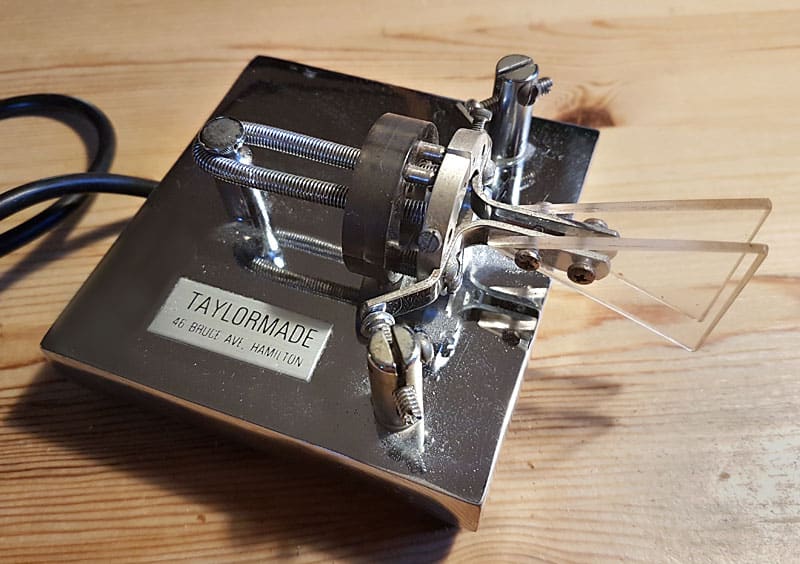
Taylormade paddles. Photo: Jan SM5LNE
Taylormade dual-lever paddles, which bear a striking resemblance to the famous Bencher BY-2 paddles, were made by Gerry L Taylor ZL1BHL of 46 Bruce Avenue, Hamilton. Both black-painted and chrome bases have been seen.
It is believed that they were first made in the early or mid 1980s and then production ceased for a while, to be resumed in 1989.
Gerry’s last known address was on Waiheke Island, but he is no longer at that address and his callsign is no longer registered.
* If you have an interesting key for this feature, please send me a nice clear photo and a few words describing it.
Quick notes
 Cable ties are an essential part of any sel-respecting radio amateur’s tool kit. You just never know when you’ll find a use for one – or several. 🙂
Cable ties are an essential part of any sel-respecting radio amateur’s tool kit. You just never know when you’ll find a use for one – or several. 🙂
The Oceania DX Contest will be held from 0600Z Saturday 9 October to 0600Z Sunday 10 October 2021. Although logs must be submitted in Cabrillo format, operators who do not have electronic logging can use this tool to create a Cabrillo log.
Numbers stations with their mysterious coded messages can still be heard on HF radio. If you’d like to learn more about them, the Radio Security Service Memorial ARS in the UK is hosting an online lecture at 1900 UTC on Tuesday 5 October (8am NZDT on Wed 6 October). You can join it on Zoom.
Have you seen a Branch 80 Key? I am trying to expand some of the limited information in the NZ Morse Key Directory, and need photos and other information about a straight key that was mass-produced by the Hibiscus Coast Radio Society (NZART Branch 80) in the 1970s and/or 1980s. If you can assist, please contact me.
Net numbers
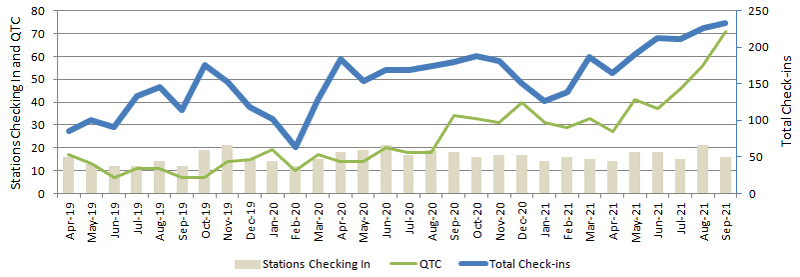
September saw 233 check-ins to the NZ Net, and 71 pieces of traffic handled. This was the result of a small but dedicated group of operators, as there were only 16 stations checking in at least once during the month. It would be great to hear more operators, so please continue to spread the word.
Here is the monthly report, as transmitted to all stations on 1 October by ZL2GVA on behalf of the Net Manager.
NR79 R ZL1NZ 41/38 AUCKLAND 0745Z 1OCT21 = NZ NET = SEP QNI ZL1AJY 6 ZL1ANY 21 ZL1BWG 21 ZL1NZ 22 ZL2GD 19 ZL2GVA 21 ZL2KE 9 ZL2LN 9 ZL2WT 11 ZL3TK 22 ZL4CU 8 ZL4FZ 2 ZL4KX 16 ZL75BRL 13 VK3DRQ 22 VK4PN 11 TOTAL 233 QTC 71 = ZL1NZ
Photo flashback: Coast stations of the British Isles
Not a photo this time but, rather, a lovely map of coastal radio stations created in 1939 by Leslie MacDonald Gill for the British Post Office, showing coast radio stations in the United Kingdom and Ireland. Given that war was about to break out, I wonder if this map was actually released in 1939.

For more on UK coast stations, see the featured video later in this newsletter.
Morse musings: A laughing matter
By Neil ZL1NZ
CW operators can be divided into two groups: those who express amusement by sending “HI” and those who send “HEE”.
I was taught “HI”, but many ops send “HEE”. At first, I thought they just had some strange spacing in the letter I.
Or maybe they were old landline men who were actually sending “HO” (in American Morse, O is two dots with a long space between them).
Then it occurred to me that maybe these guys were deliberately sending “HEE”.
After all, we have “Tee Hee Hee” when someone is very slightly amused. And there is “Hee Haw” when something is uproariously funny.
Now I think maybe “HEE” is the right way to laugh in CW. What’s your opinion?

Cartoon: Gildersleeve
Oops
Nice to see support for Māori Language Week from this supplier of amateur radio equipment, but I think their Morse Code needs work, don’t you?
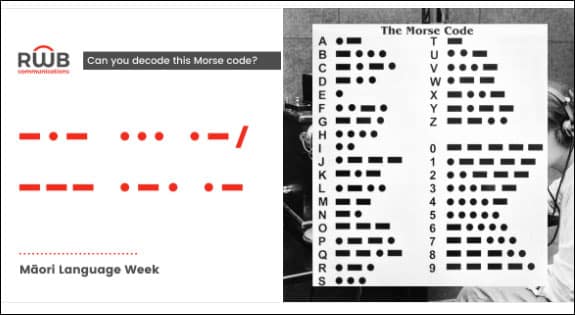
More on learning the code
Peter ZL1PJH, writing in NZ Net News 64, described some of his trials and tribulations while learning Morse.
In response, Stan ZL3TK offers these words of encouragement:
Many small hurdles, none insurmountable
Organisation and discipline extremely beneficial
Reveals the fact that age is no barrier
Slow and steady invariably wins the race
Exercise always striving for perfect practice
Congratulations on getting started, there’s no going back
Onwards and upwards, ratcheting progress
Derring-do like in the exciting days of yore
Excellence is in sight and fully achievable
Video: QRT 500 – the end of 500 kHz W/T in the UK
This is a long video, and it includes plenty of Morse.
While you’re enjoying the video, here’s a challenge: jot down six callsigns that you hear, then send them to me in a radiogram.
NZ Net quiz: What am I?
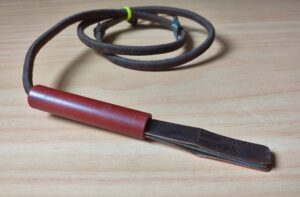 In our previous newsletter, I asked if you could identify the item shown here.
In our previous newsletter, I asked if you could identify the item shown here.
The gadget on the end of the cable is called a wedge, and it consists of two conducting strips with an insulator between them. These are sometimes found connected to older bug keys, and they were most often used by bug owners working on landline telegraph systems.
Each telegraph office would be equipped with a straight key permanently attached to the operating desk. The operator would carry his or her own bug to work (it was precious and personal), then insert the wedge into the “bug lip” that was part of the circuit closing switch on the straight key. See photo below from telegraph-history.org.
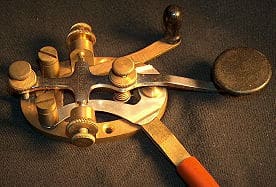 They could then use either the straight key or the bug. And when they needed to close the circuit (i.e. any time they were not sending a message), they would use the circuit closer on the bug.
They could then use either the straight key or the bug. And when they needed to close the circuit (i.e. any time they were not sending a message), they would use the circuit closer on the bug.
If you buy a modern straight key or bug, it’s very unlikely to have a circuit closer since they have little value in radio work.
Congratulations to Gerard ZL2GVA who got the whole answer correctly and sent it to me via radiogram.
Net tip: Station of Origin in radiograms
I have heard a bit of confusion lately about what to put in the Station of Origin box of the radiogram preamble.
This should be the callsign of the first station to transmit the message into the traffic system. It is not necessarily the sender of the message, although it often is.
Perhaps a hypothetical example will illustrate this best.

(This example also shows why we should never assume that we know what’s coming next when copying CW!)
As you can see in this preamble, it’s Message NR 94 with Routine Precedence. But who decided that? The answer is the Station of Origin. ZL1NZ is the first station to transmit this message, so the Message NR tells us it is the 94th message originated (i.e. first transmitted) by ZL1NZ in the current year.
After the Check numbers, you might have expected to copy AUCKLAND, but in this case it’s BLACKBURN VIC because that is the location of the person sending the message. Sure enough, at the end of the message comes the signature and it’s “MANNY VK3DRQ” who lives in Blackburn.
So what happened here? Well it’s hypothetical, but let’s say Manny couldn’t get on the air for some reason, but wanted to get a message to ZL2GD. So he emails his message to me and asks me to send it to Grant on the Net.
Therefore, the Place of Origin and the Signature both reference Manny. But the Station of Origin is ZL1NZ because I am the person putting it into the system, i.e. the first station to transmit the message over the air. If there are any follow-ups or queries resulting from this message they should be directed to me as the Station of Origin.
If, on the other hand, Manny had sent me the message for Grant over the air, then the message preamble would have had VK3DRQ as the Station of Origin and the Message Nr would be Manny’s too.
A final point: the message preamble does not change if the message is forwarded. It retains all the metadata set by the Station of Origin.
I hope that makes Station of Origin clearer. Let me know if you have questions or have another topic you’d like me to cover in Net Tips.
Advertising archive
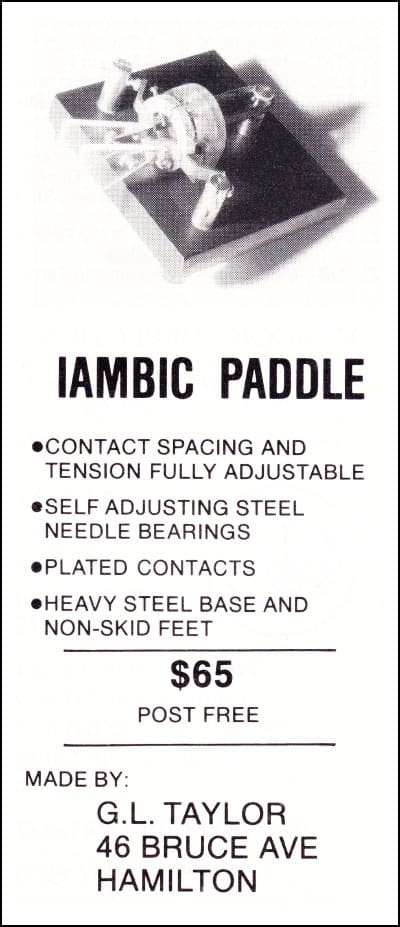
Break-In magazine, September 1983
Here’s an advertisement for this edition’s Featured Key, the Taylormade paddles by Gerry Taylor.
This ad appeared in Break-In magazine in September 1983.
Courtesy David ZL2WT
Suggestions?
If you have suggestions on how to make the NZ Net better, or things you’d like to see covered in these updates, please contact ZL1NZ. You might even like to write something for the newsletter.
Thanks for reading, and I hope to see you soon on the NZ Net!
—
Neil Sanderson ZL1NZ, Net Manager
New Zealand Net (NZ NET)
3535.0 kHz at 9pm NZT Mon-Fri



